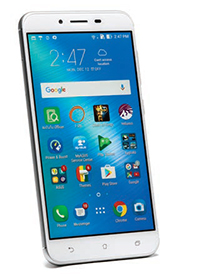 When Asus launches a product, it floods the market with ‘variants’ differing quite a lot from each other that each can be considered a separate model. The ‘Max’ designated phones have higher capacity batteries and can recharge other phones with an OTG cable. These are value for money phones that are less capable than the main models from which they derive their names. We are putting to test, the atest in the ‘Max’ designated phones, the Zenfone 3 Max.
When Asus launches a product, it floods the market with ‘variants’ differing quite a lot from each other that each can be considered a separate model. The ‘Max’ designated phones have higher capacity batteries and can recharge other phones with an OTG cable. These are value for money phones that are less capable than the main models from which they derive their names. We are putting to test, the atest in the ‘Max’ designated phones, the Zenfone 3 Max.
Design and Build Quality
The Zenfone 3 Max has a metal unibody design like most phones in the market now. The screen is protected by a 2.5D curved glass, though it is not mounted seamlessly. The square fingerprint sensor is at the back, which requires you to pick up the device to unlock it. The phone uses a micro USB terminal, while most others have moved on to the faster and reversible USB Type C. The camera is mounted at the same level as the body and sits between the flash and laser emitter. The chrome antenna lines are slightly receded into the body.
Key Features
The Zenfone 3 Max has two variants, and we received the ZC553KL, which has the best camera out of the two. The device runs on Android 6.0, under an ASUS ZenUI 3.0 skin. It uses an FHD (1920×1080) IPS display, protected by a 2.5D contoured glass. Like all recent models, the screen is coated with a fingerprint and smudge-resistant oleophobic coating. The device uses a 64-bit Octa-Core Qualcomm Snapdragon 430 CPU clocked at 1.4GHz along with Adreno 505 GPU.
The phone has 32GB eMCP internal
storage and supports up to 128GB of expanded storage via micro SD card. You can get cloud storage of 100GB on Google Drive for two years along with 5GB Asus Web Storage for life. The Zenfone 3 Max has 3GB LPDDR3 RAM. The main camera is a 16-megapixel PixelMaster 3.0 model with a 1/3-inch sensor. The camera offers a constant aperture of f/2.0. The camera uses what Asus calls the TriTech AF system, which combines Laser AF, Phase Detection AF and Continuous AF to ensure fast autofocus in 0.03sec. A dual LED real tone flash is part of the unit. Shooting modes include Auto, Manual, HDR Pro, Beautification, Super Resolution, Low Light, QR code, Night, Effect, Selfie, Panorama and Time Lapse. Videos can be recorded at HD (1080p, 30 fps) quality, and there is a provision to capture a still image from video. The front camera is 8 megapixels with an aperture of f/2.2. The front camera offers shooting modes such as Beautification, Auto, Night, HDR Pro, Effect, Low Light, Time Lapse and Audio.
The smartphone uses an ICE power enhanced speaker along with dual microphone with noise cancellation. It also has a built-in FM receiver. The Zenfone 3 Max has one SIM slot accepting a Micro SIM and another hybrid slot that can accept either a Nano SIM or a Micro SD card for memory expansion. Both the slots support 2G, 3G and 4G. The device is powered by a 4100mAh nonremovable battery. The smartphone measures 151.4 x 76.24 x 8.3mm and weighs 175g.
Ergonomics
The Zenfone 3 Max is not very thin, and the phone is quite slippery. The Zenfone 3 Max fits perfectly in your hands and the interface is quite uncomplicated.

